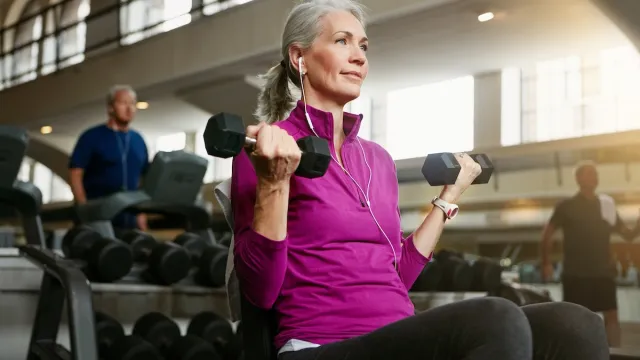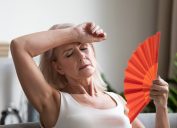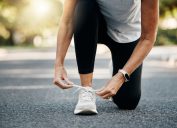If You're Over 65, Don't Wear These 10 Clothing Items to Exercise
Physical therapists and personal trainers say they could lead to accidents and injuries.
Choosing workout wear isn't too dissimilar from selecting an everyday outfit: You want to be comfortable and look and feel your best. But when it comes to the clothes you wear to exercise—especially over age 65—there's the added component of safety. As you age, you probably find that your balance isn't quite what it used to be (hello, supportive sneakers) or that you don't bounce back as easily from getting overheated (bring on the breathable fabrics). For these reasons and more, we consulted physical therapists and personal trainers to find out the clothing items you should avoid when working out if you're over 65.
RELATED: 5 Items You Shouldn't Wear on Hot Days If You're Over 65.
1
Anything too tight
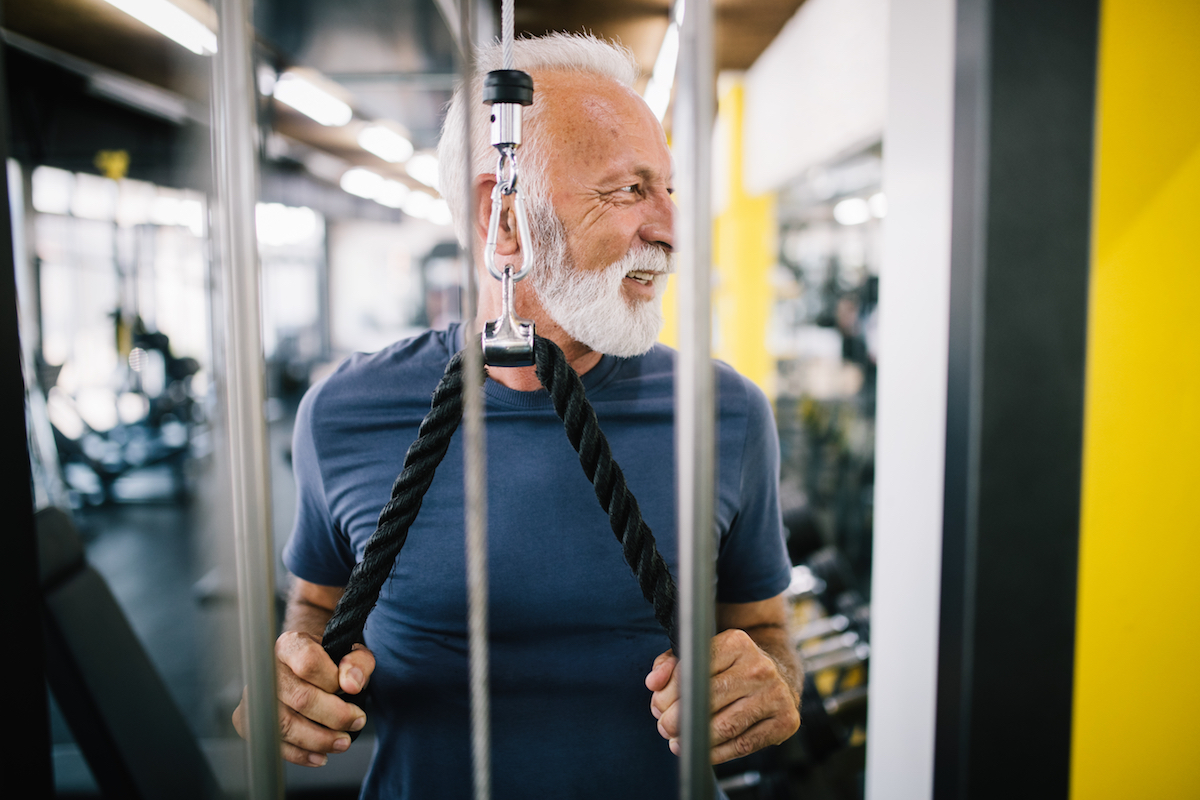
Choosing a gym outfit to wear over the age of 65 is about finding a happy medium between tight and loose.
"People over 65 should wear clothing that is breathable, sweat-wicking, and comfortable without being restrictively tight or too compressing," says Rachel MacPherson, certified personal trainer. "Circulation can be decreased when you are older, so it's important to make sure seams and cuffs of clothing are not digging into your skin."
Try a squat or pushup before making your next athleisure purchase to ensure your items fit the bill.
2
Or too loose
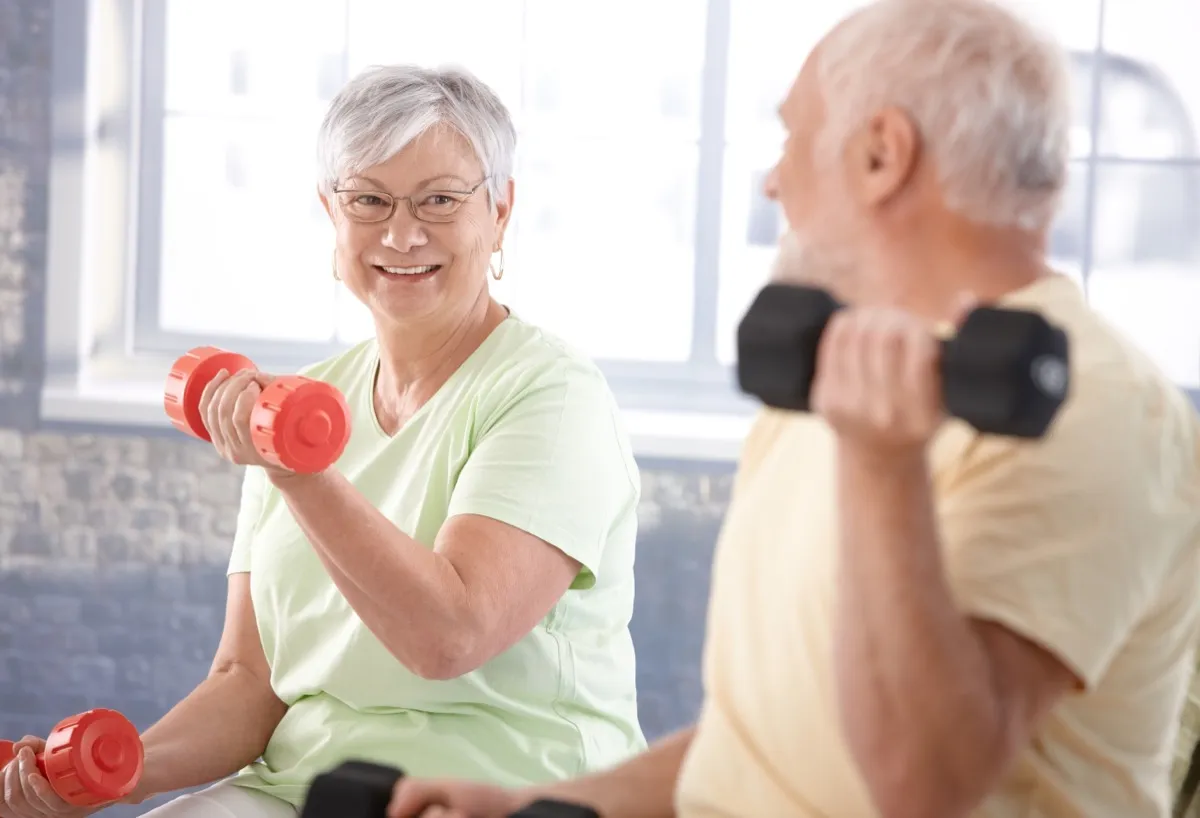
On the other hand, overly loose clothes can also be a hindrance. If people arrive in them for a training session, MacPherson simply keeps those folks away from machines and cables that could catch on the clothing and cause an injury.
"It's a touchy subject because people often want to hide their bodies when they do this, and asking someone to wear tight clothing is not appropriate," says MacPherson.
Loose clothing can also make it difficult for your trainer to assess your form. For example, "loose pants can obstruct the view of your feet and make it harder to see if you're maintaining proper alignment during exercises like squats or lunges," says Bishnu Pada Das, National Academy of Sports Medicine certified personal trainer.
Fortunately, most outfits are totally fine—you'll just want to stay away from dragging hems and oversized pieces.
RELATED: If You're Over 65, Don't Wear These 6 Clothing Items When It Rains.
3
100 percent cotton pieces
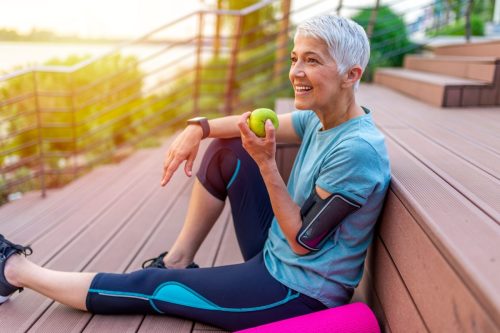
There's a reason workout clothing is sold in a separate department: It's made of materials that are conducive to exercising and sweating.
In a blog post on the Elite Sports Club website, group exercise instructor Annie Farley, MS, CPT, says to avoid any clothing items that are 100 percent cotton, as the material easily absorbs moisture and is then slow to dry. "That excess moisture weighs you down, can cause chills, skin breakouts, and an increase in chafing," she says.
Instead, choose moisture-wicking fabrics like spandex, nylon, and polyester, which "pull moisture away from the skin using tiny, built-in capillaries," explains Macy's in an activewear guide. "Moisture is drawn to the exterior of the fabric, which makes it easier to evaporate."
4
Irritating underwear
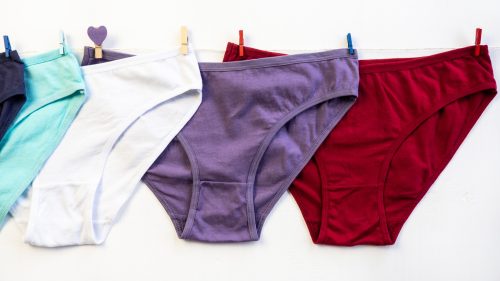
One workout garment where cotton is acceptable is underwear.
"The most sensitive tissue in the body, skin-wise, is the vulvar and vaginal tissue, as far as people getting allergic reactions and irritative reactions," Mary Jane Minkin, MD, a clinical professor in the Department of Obstetrics, Gynecology and Reproductive Sciences at the Yale University School of Medicine, told Today.
"There are some people that get irritation from dyes or materials, so that's why I tend to say stick with the white stuff, white cotton … cotton tends to be pretty non-irritating, as compared to some of the synthetic fibers," she explained.
In a separate interview with Glamour, Minkin added that, "the newer blends that wick away sweat are good too."
But always avoid anything with the potential to chafe (like lace) or bunch up (such as baggy men's boxers).
5
An unsupportive sports bra
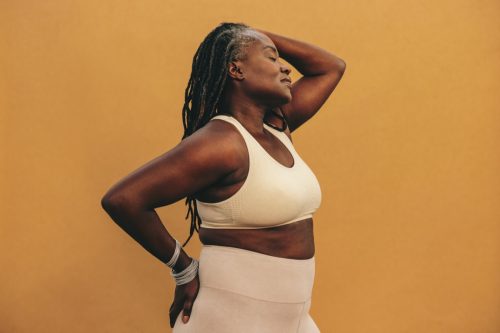
You probably know it's important to get fitted for a regular bra, but have you considered that the same is true for a sports bra?
"This can make or break a workout for someone who is over 65 years old. Make sure that you get the correct fit from a store such as Lululemon or Athleta, who can make sure you are in the right bra for the right exercises you do," shares Jennifer Rulon, 15-time Ironman triathlete and life coach.
In terms of support, "a running/jogging bra will be way different than a yoga bra," Rulon notes.
"A great sports bra protects the ligaments and tissues in your chest from excessive stretching or stress so you can train hard without worries," adds Farley, who says this garment should also be made of a moisture-wicking, non-cotton fabric.
RELATED: If You're Over 65, Don't Wear These 5 Clothing Items When Traveling.
6
Poorly fitting sneakers

Wearing ill-fitting or unsupportive footwear is one of the biggest no-nos for workout wear after age 65.
"Older adults may be more prone to foot problems like flat feet or plantar fasciitis, so choosing shoes with good arch support is crucial," says Pada Das. "Shoes with good cushioning can help absorb impact and reduce stress on joints, which can be especially important for individuals with arthritis or other joint problems."
You'll also want to look for shoes with quality grip to prevent slips and falls, as well as ones that fit properly to prevent blisters and rubbing. If you're worried about tripping, especially if you're running or walking outside alone, a slip-on athletic shoe is a great option.
7
The wrong sneakers for your workout
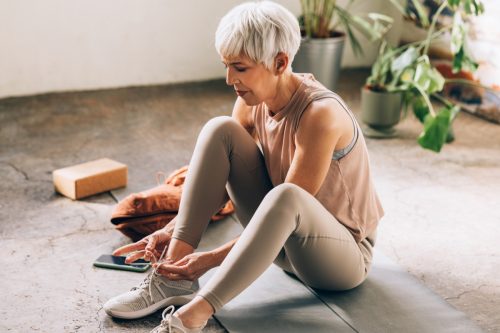
Though any sneaker should be supportive and not worn out, it's also important to consider the best type of shoe for your workout.
According to Adidas, if you're lifting weights, you'll want a sneaker "with a low arch or minimalist profile that provides you with the right support and balance." They say these are also the "best workout shoes if you like to mix it up in the gym."
However, if you plan on doing a lot of running, you'll want something with a "bouncier and thicker footbed," Chrisi Moutopoulos, personal training regional manager at GYMGUYZ, previously explained to Best Life.
RELATED: 7 Tips For Wearing Sneakers Over 65, According to Doctors and Style Experts.
8
Thin socks
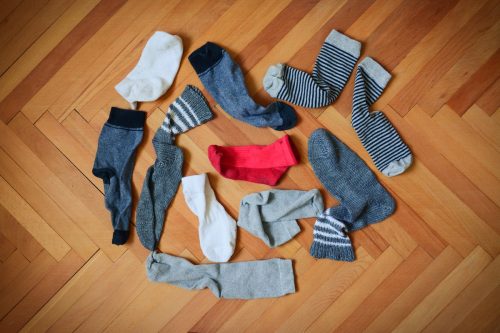
Just as poorly fitting shoes can cause blisters and strain on joints, so can unsupportive socks. That's why experts recommend that those over 65 choose cushioned athletic socks for their workouts.
"These offer extra padding and shock absorption, reducing impact during workouts and providing support for aging joints, ultimately minimizing strain and potential injuries," Tony Hu, DPodM, a chiropodist for Family Wellness Foot Care in Ontario, Canada, previously told Best Life.
These can also be found in moisture-wicking fabrics.
9
Jewelry
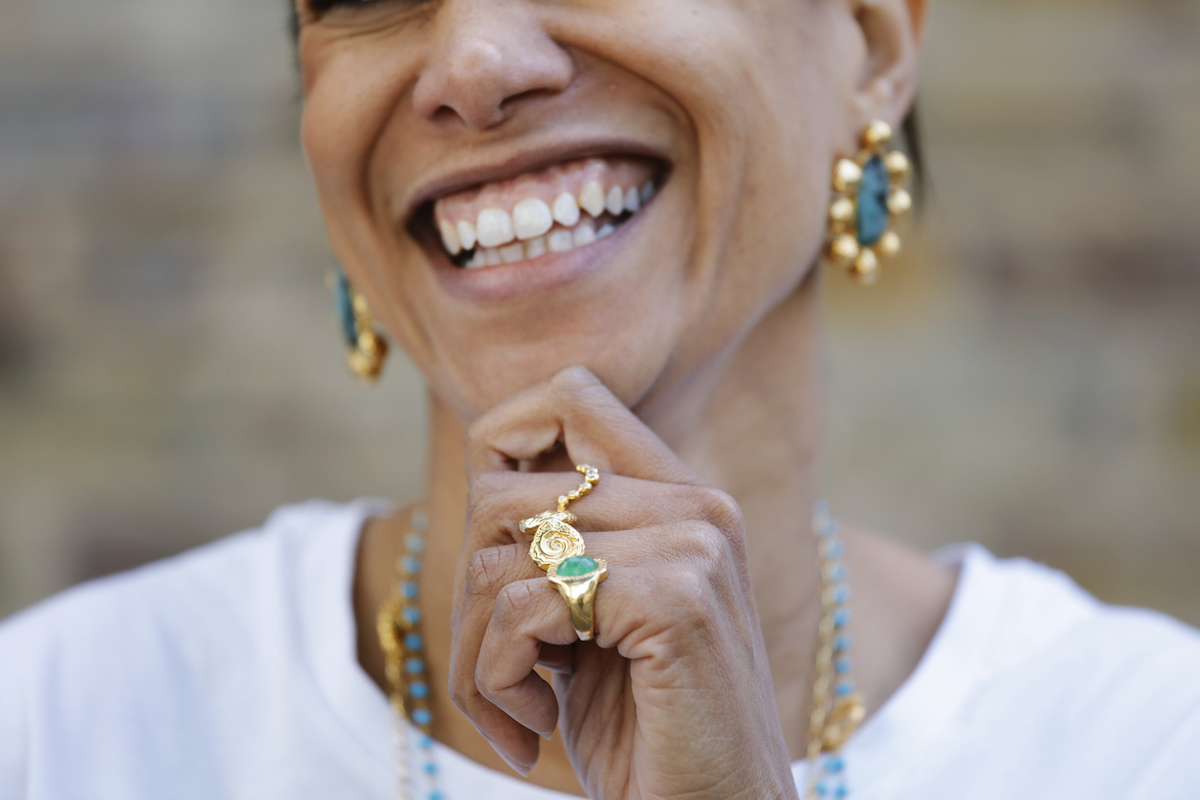
Necklaces, earrings, bracelets, and more can also be hazardous at the gym, so you'll want to remove them ahead of your sweat sesh.
"Jewelry that dangles or is loose can get caught on equipment or may cause injury, so it's best to remove it before working out," says Pada Das.
10
Wearable ankle weights
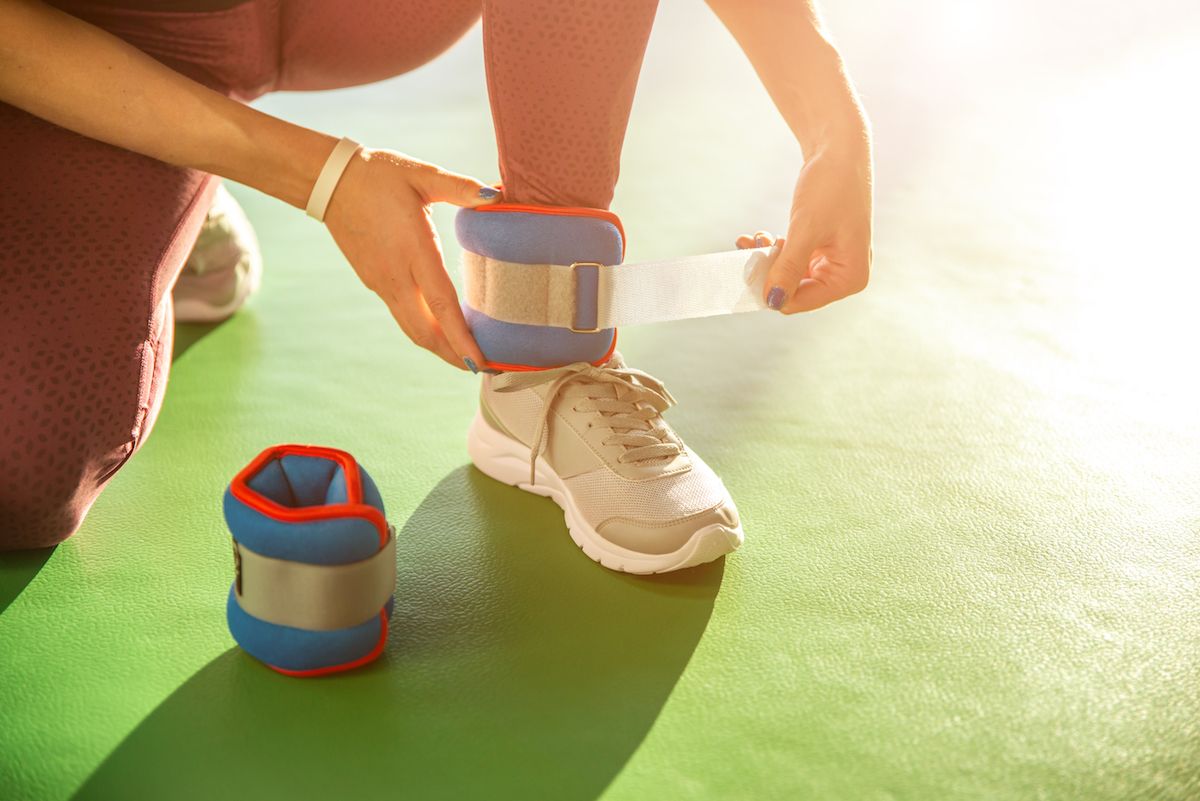
You've probably seen ankle weights everywhere lately. And while this isn't clothing per se, it might not be the best thing to introduce to your workouts after age 65.
Terry Downey, a physical therapist at Harvard-affiliated Spaulding Rehabilitation Network, told Harvard Health they could add a disadvantage to exercises like walking by forcing you to use your quads. "That causes a muscle imbalance," Downey said.
The weights can also pull on your ankles, which adds the risk of injury to the knees, hips, and back, according to Harvard Health. Consult your doctor before adding them to your routine.
